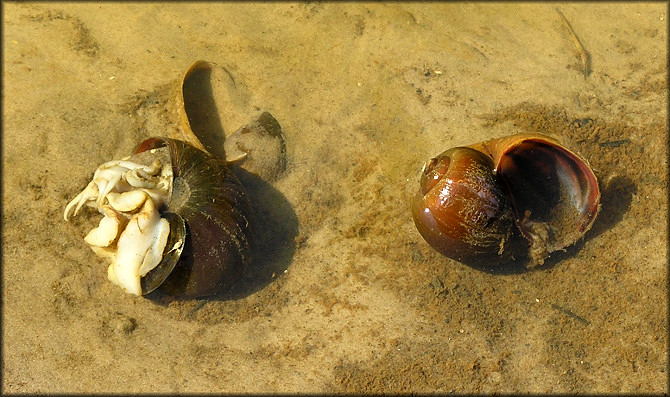|
Pomacea canaliculata (Lamarck, 1822) Mortality |
| The watershed in which the Pomacea live (lake/retention pond and the drainage ditch some 300 yards below) drains a wide area which includes both residential and industrial areas to include a massive railroad switching yard. Therefore, a large amount of precipitation during a relatively short period can cause the water level to rise as much as six feet very quickly. This wildly fluctuating water level obviously has a detrimental affect on the resident snail population as well as other aquatic life. In regards to Pomacea egg laying, during periods of high water the snails may venture far from their normal habitat and deposit their egg clutches on vegetation, which later after the water level returns to more normal levels, can be 20 feet from the lake. Another detrimental factor is run-off - to include both silt and possibly noxious chemicals. A large amount of rain during the 3rd week of October, 2005, during which time the lake level rose at least three feet, appeared to have been especially destructive. A visit to the area on October 25th showed that the water level had nearly returned to normal but a large amount of suspended particulate matter was present and dead and dying fish and crayfish were evident. A follow-up visit two days later showed the water level had continued to recede but there was little change in the water clarity and evidence of Pomacea mortality was observed (see below). Because of the large amount of aquatic vegetation in both the lake and drainage ditch, the full extent of snail mortality will likely forever remain a mystery. |
|
|
